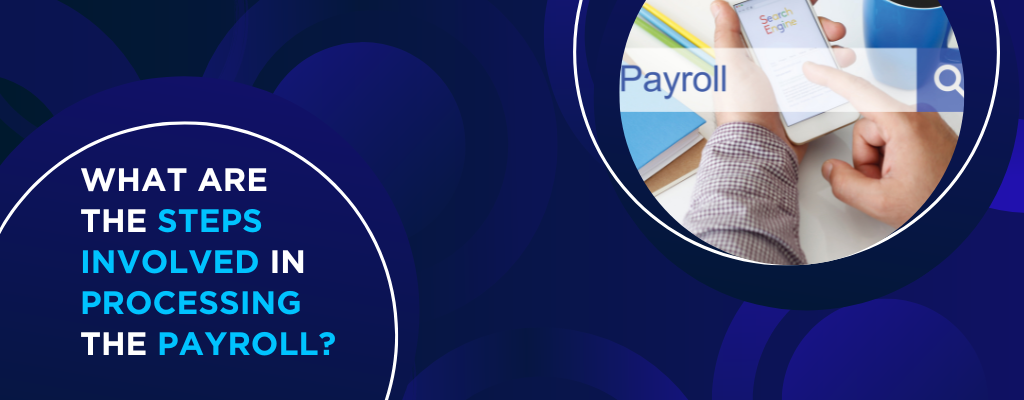What Are The Steps Involved in Processing The Payroll?
The UK went through many upheavals after Brexit, but it’s fair to say that it remains a favourite destination for many business owners. The United Kingdom, which has a population of over 65 million, accepts and celebrates the many immigrants’ cultures, which is why international companies are eager to start a business here.
But before they do so, they need to understand the UK payroll obligations, employment laws, and tax obligations. In this blog, we are listing the steps a business would need to take during payroll processing. But first, let’s look at the UK’s payroll requirements.
An Insight Into Payroll in The UK
The UK has a well-developed and efficient payroll and payroll tax system. The law specifies the minimum salary and the necessary tax and social security deductions. Additionally, the government offers a real-time web system for tracking and collecting all payments from businesses. Companies are accountable for the correct and prompt computation and payment according to different laws for employees and contracts.
Payroll outsourcing is common in the UK. According to research from the UK’s Chartered Institute of Personnel and Development (CIPD), 39% of firms in the UK choose to outsource payroll, making it the most popular HR function.
Regardless of whether payroll is handled internally or externally, it is still the company’s legal obligation to adhere to UK payroll regulations. Punishments for non-compliance or inaccurate submissions are severe. For instance, failing to follow the proper pension auto-enrolment processes may result in fines of £400 to £10,000.
PAYE and UK
The UK government’s PAYE (Pay As You Earn) program collects tax and national insurance from workers. Any business with one or more employees must register, maintain records, and submit complete payment information via the PAYE system. It’s managed by UK HMRC (HM Revenue and Customs).
Any new hire must have a tax code to be registered as an employee. Depending on their situation, this may be a brand-new or old one from a previous job. Employers must provide all payroll data on or before the day employees are paid (through a system called Real Time Information). An example of a Full Payment Submission is this (FPS).
Although one can do this frequently, this is often done monthly. By the 22nd of the month following the payroll date, one must make payments owed to HMRC via the PAYE system.
Any additional mandatory employee payments are made through PAYE in addition to the average remuneration. Sick pay, maternity pay, paternity pay, and redundancy pay-outs fall under this category.
A 6-Step Payroll Processing Guide

1. Collect Employee Tax Information
The first stage in the payroll processing procedure is getting the relevant tax information from employees. Before beginning the new position, an employee must provide the employer with a valid identity for this process. An employee must fill out this information unless they are an independent contractor.
At first, all of this data gathering may seem overwhelming. Payroll software that includes leave and attendance management must be used.
2. Create a Record Management Process
You need to keep a variety of records of the employees. To make the necessary payroll deductions, you need evidence of any retirement and benefit choices they have made. Additionally, all employee handbooks, tax forms, employment contracts, and training must be completed, signed, and preserved for compliance.
Employee record management is a simple method for managing all these moving parts. An improper pay check may occur from incorrect information on an employee’s record.
3. Set a Pay Schedule
It’s time to choose the pay frequency the employer wishes to provide the staff now that the employee data is correct and updated. We’ve discovered that firms often have bi-weekly, semi-monthly, or monthly pay periods.
Irrespective of the schedule you decide on, it’s crucial to let the staff members know when they can expect their pay checks.
4. Start Tracking Time And Attendance
Time tracking and payroll processing are interdependent. Employee compensation is based on time factors like hours worked. A simplified time and attendance procedure is essential to correctly capture and record employee hours. To prevent overpaying or underpaying employees, keep track of time-related things, including meals, breaks, and accruals.
All workforces benefit from time cards, timesheets, and mobile applications, which allows employees to clock in from different locations, time zones, and projects.
5. Calculate Deductions And Pay The Employees
Calculating deductions is the next stage in your payroll procedure now that you have time and attendance monitoring. You must first comprehend the various forms of deduction to perform this.
This computation yields a value that represents the net salary of your employee. Any pre-tax, required, and post-tax amounts are deducted from the gross employee pay once it has been calculated.
It’s time to start processing payroll after determining your employee’s take-home compensation.
6. Pay Payroll Taxes
Following the processing of payroll, employers still have work to complete. Employers must send payroll taxes to the proper government departments. You can also be required to make state payroll tax filings and other payments, depending on where your company conducts business.
To Sum It Up
Our 6-step payroll processing guide can help you understand payroll processing in the UK. However, it is best to outsource your payroll processing to a third-party experience vendor. It frees your time, saves resources, and helps you gain expert help.

